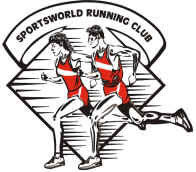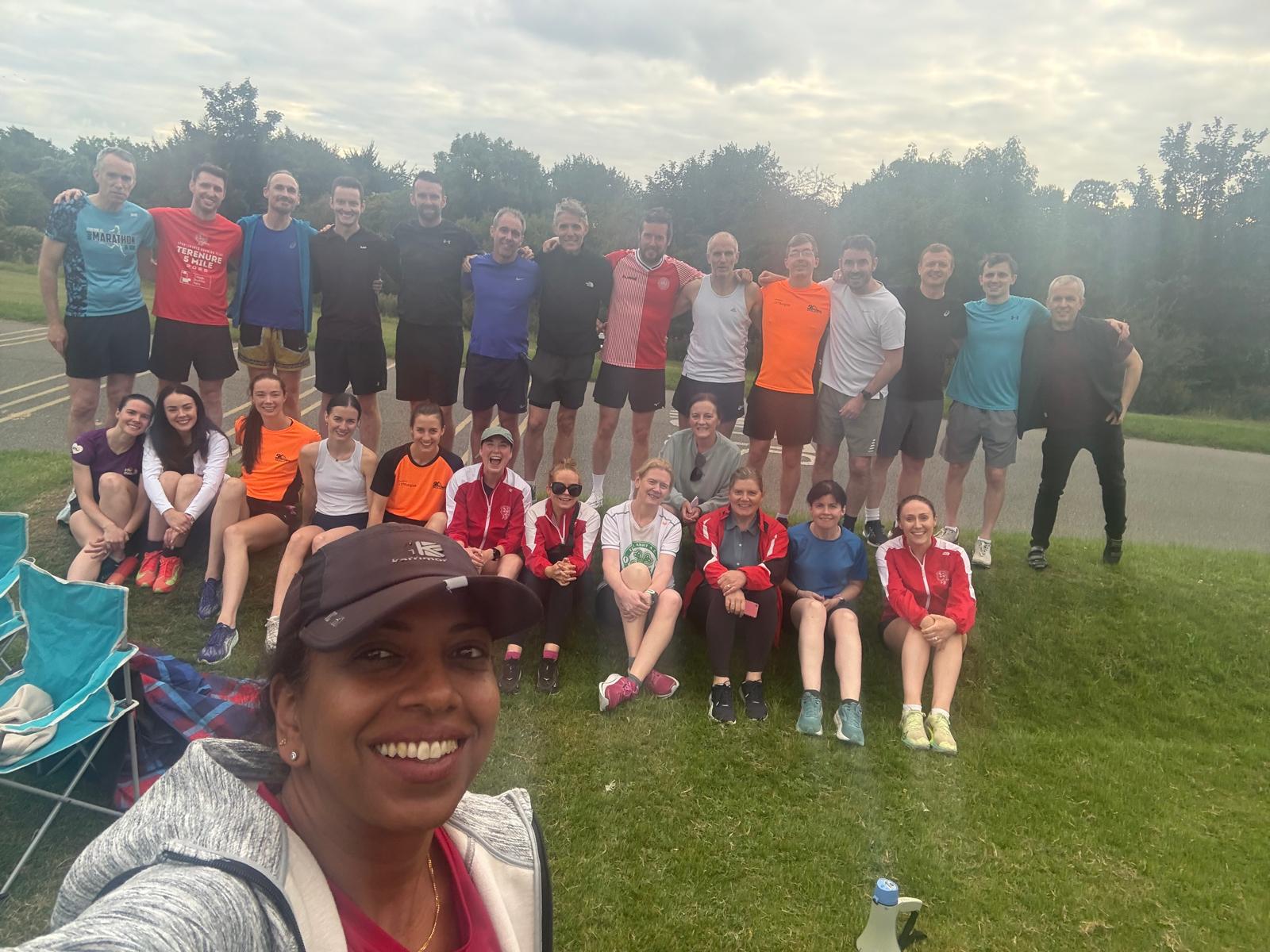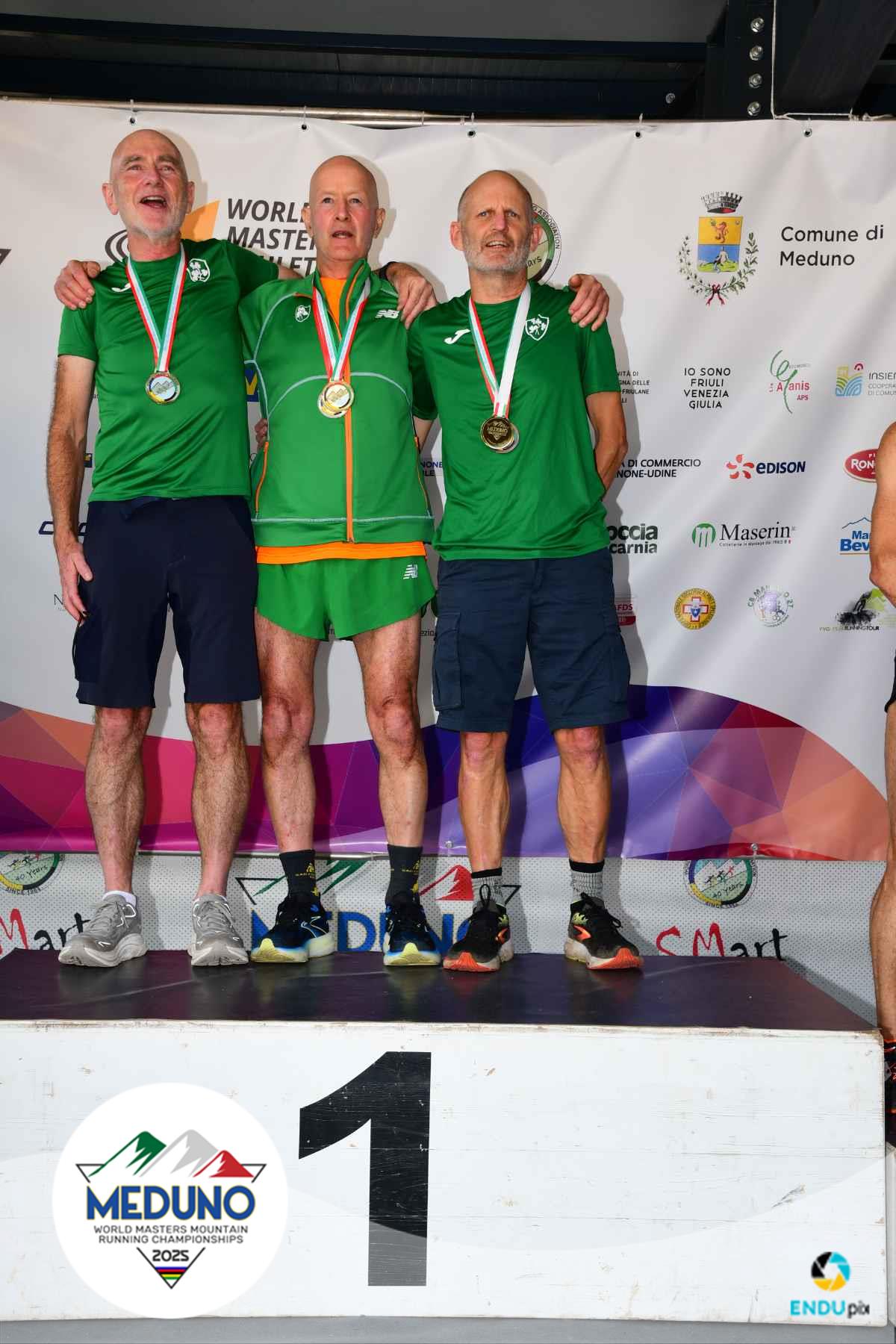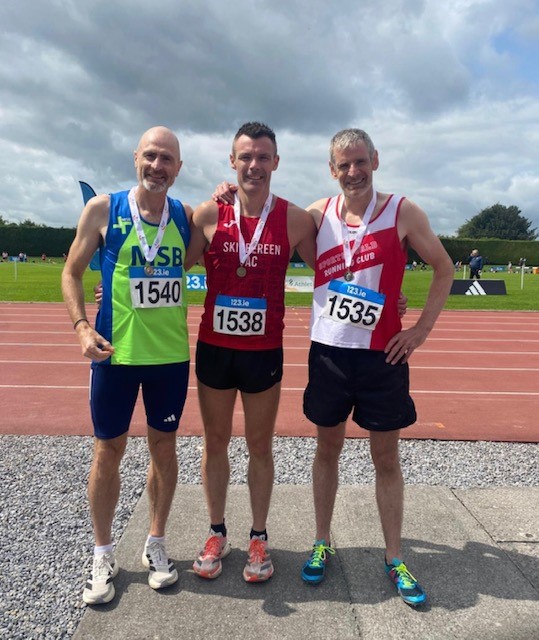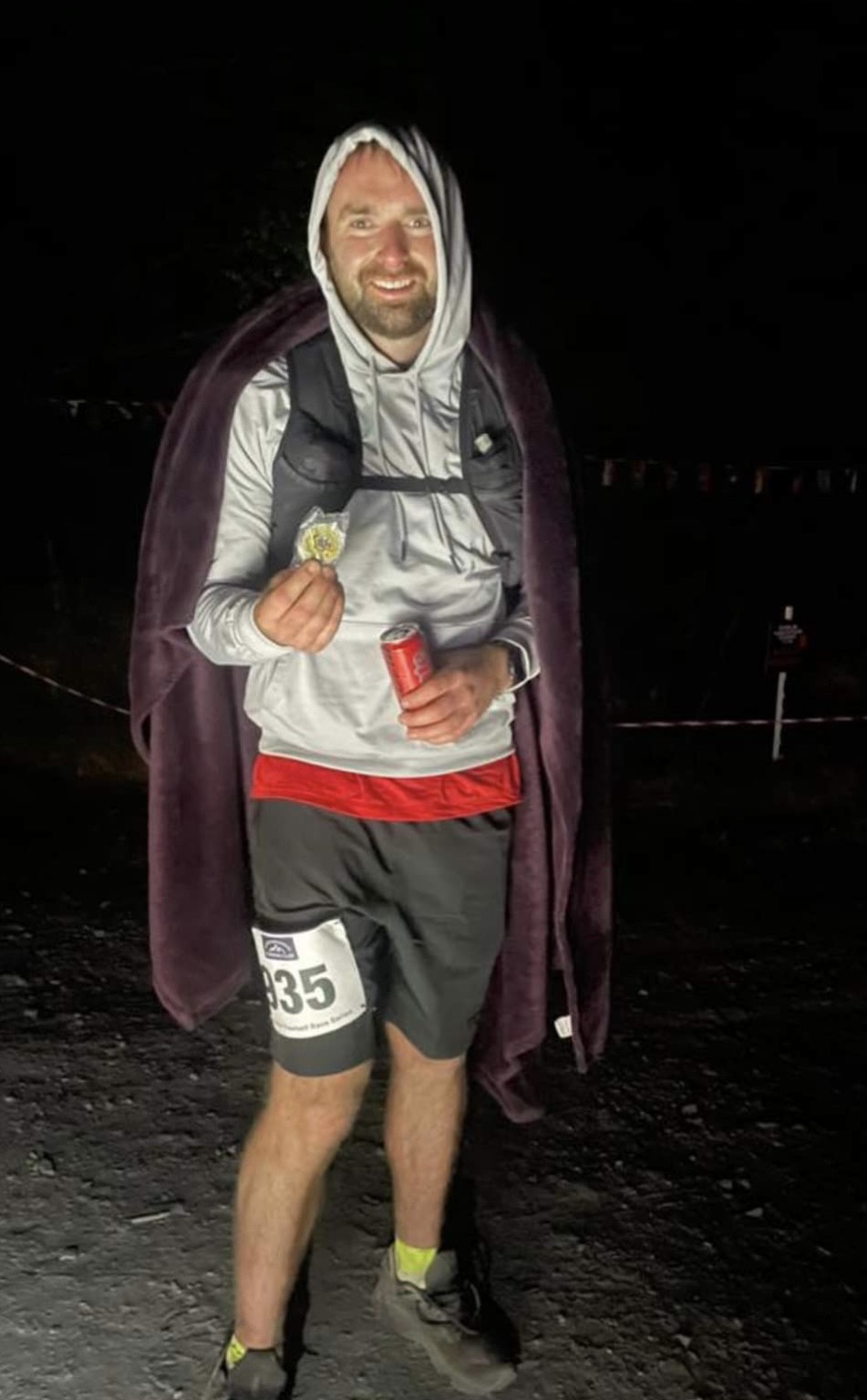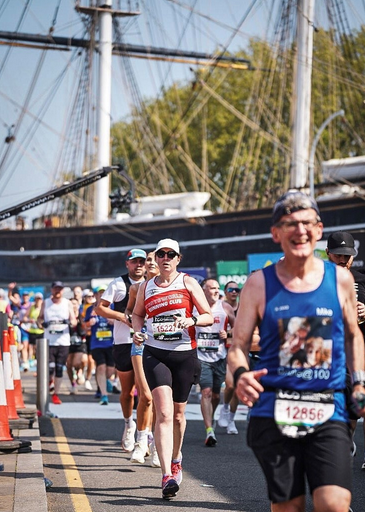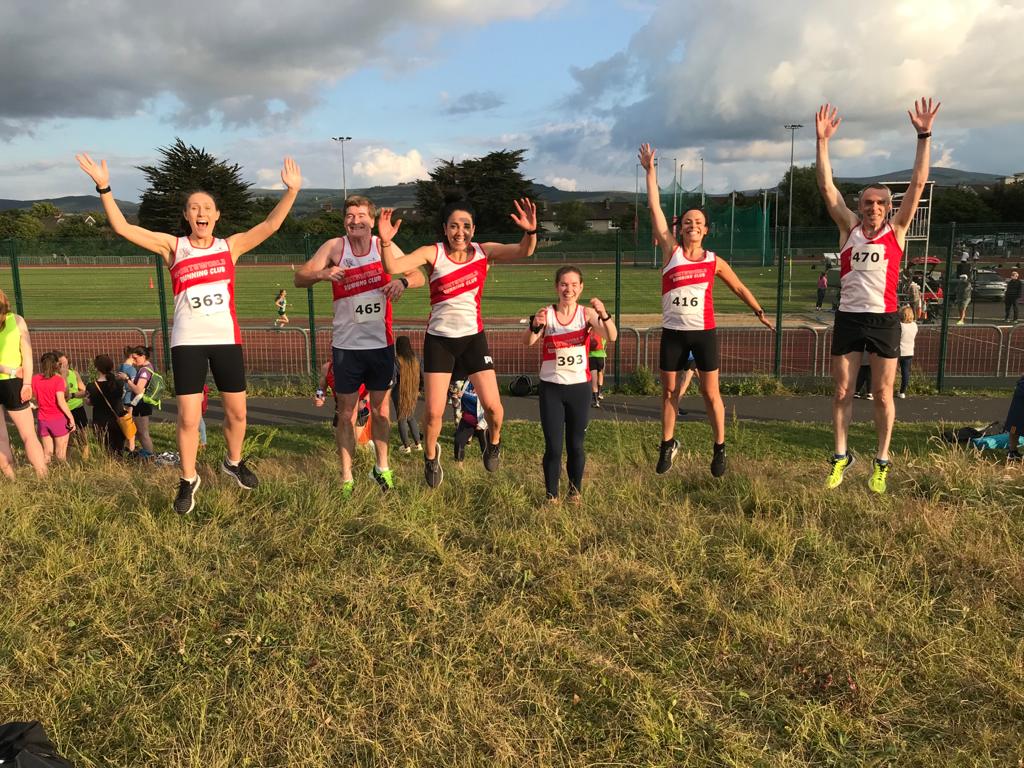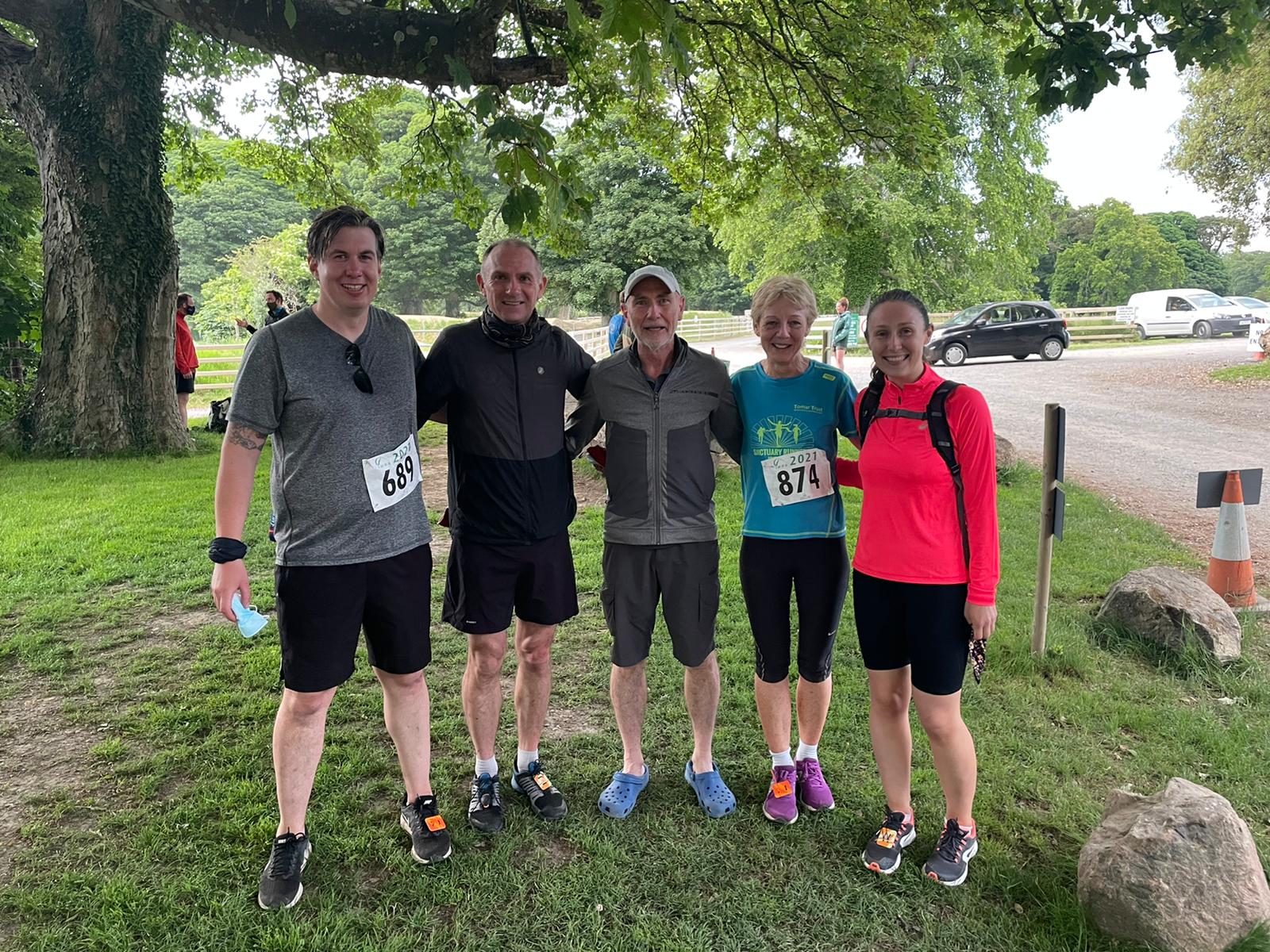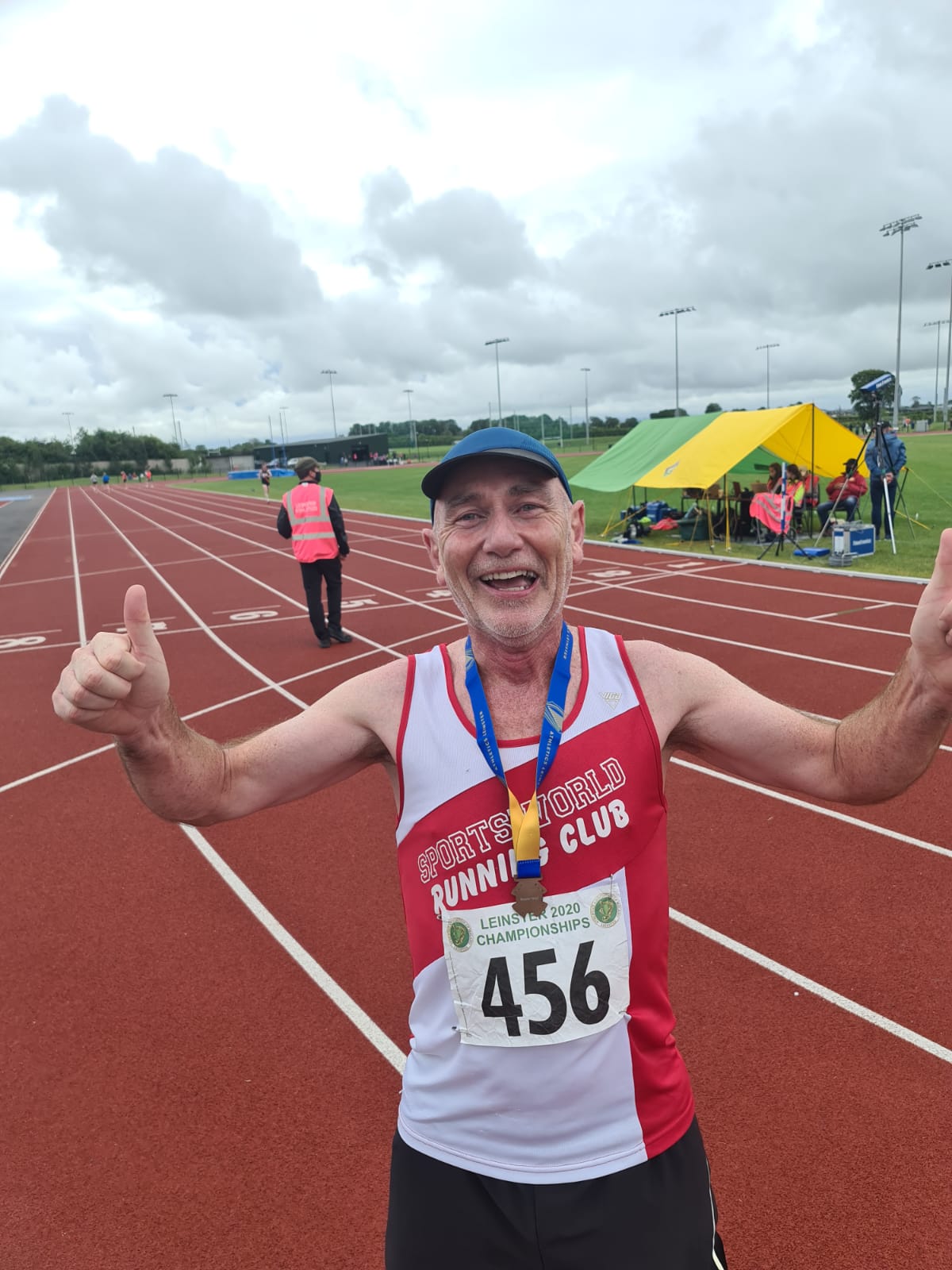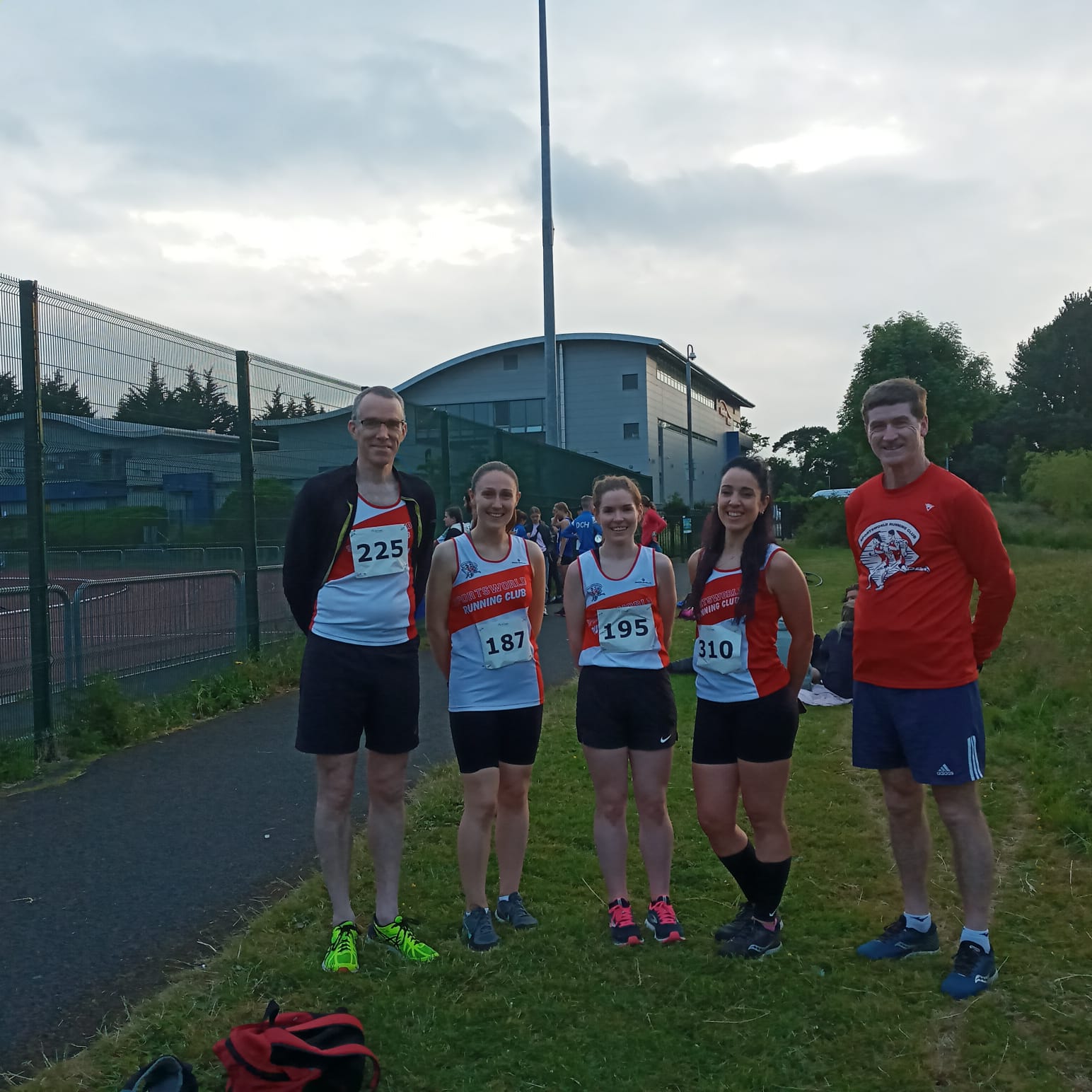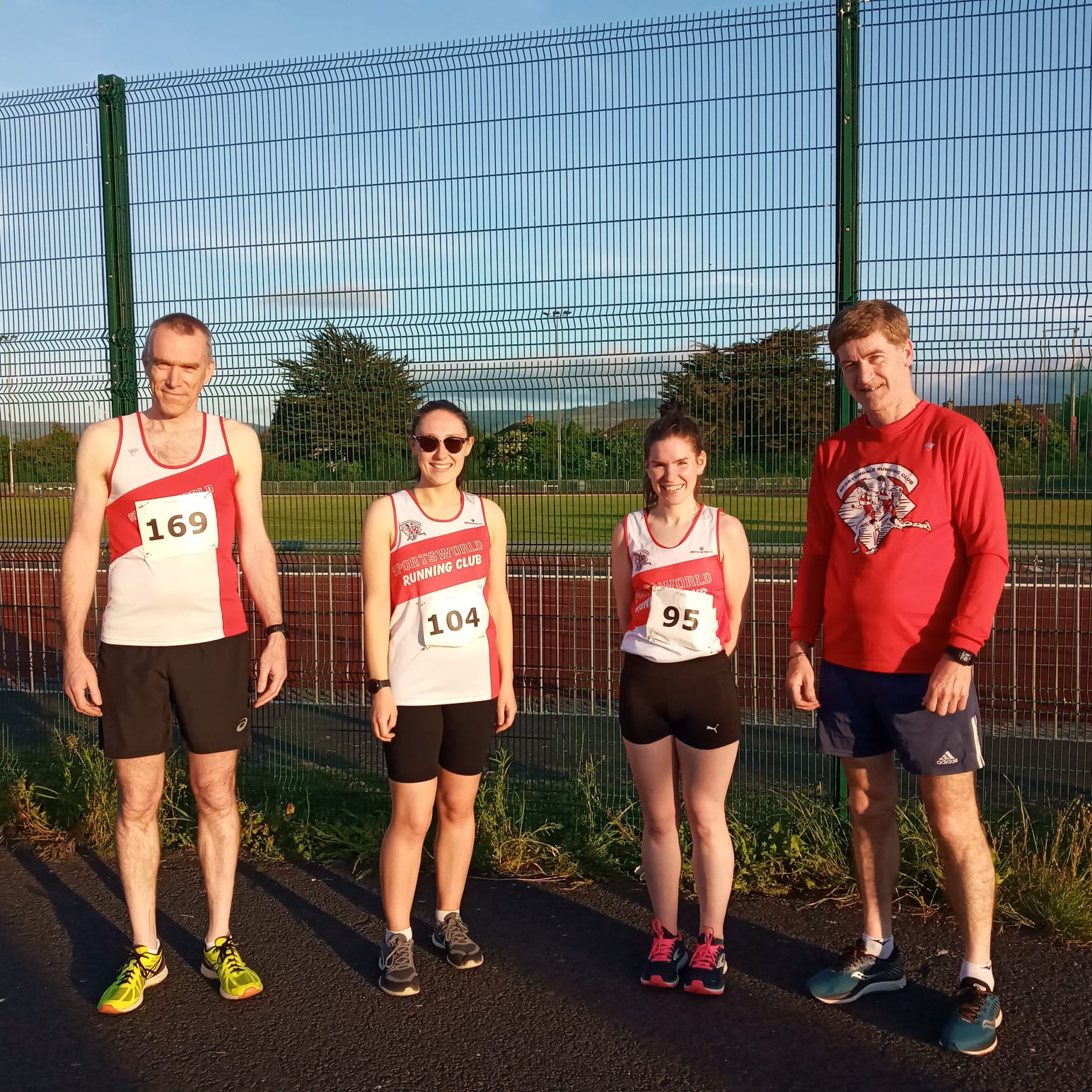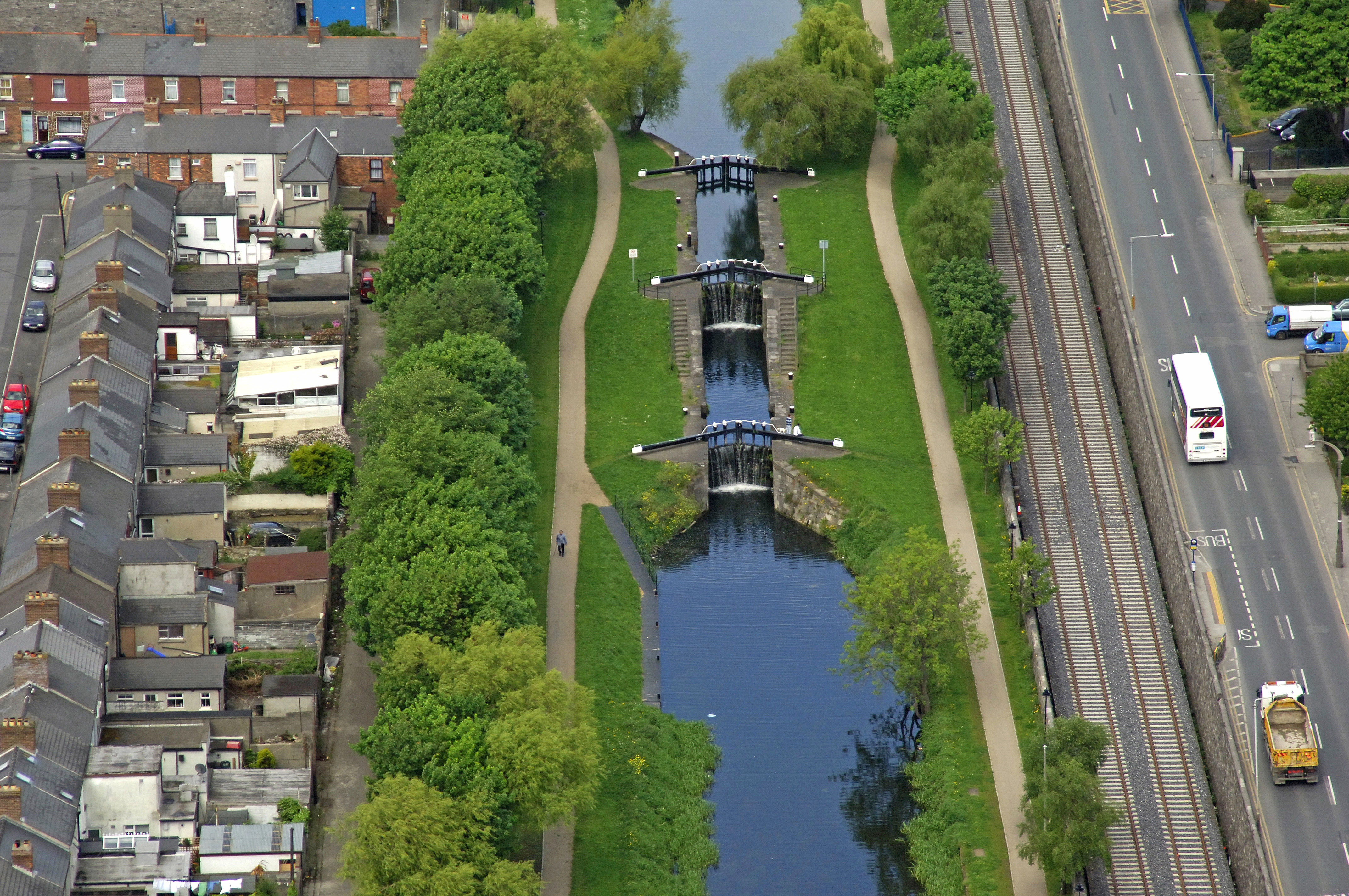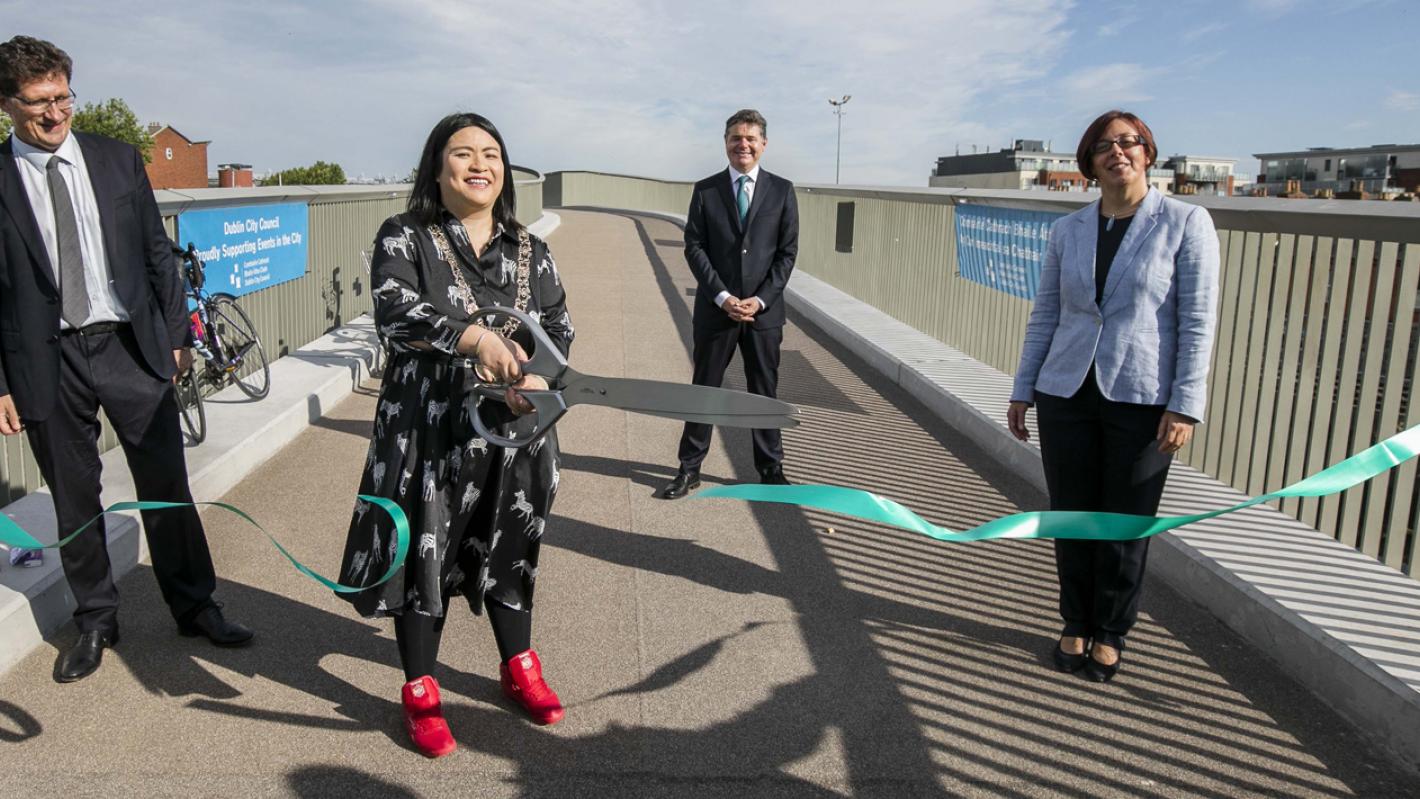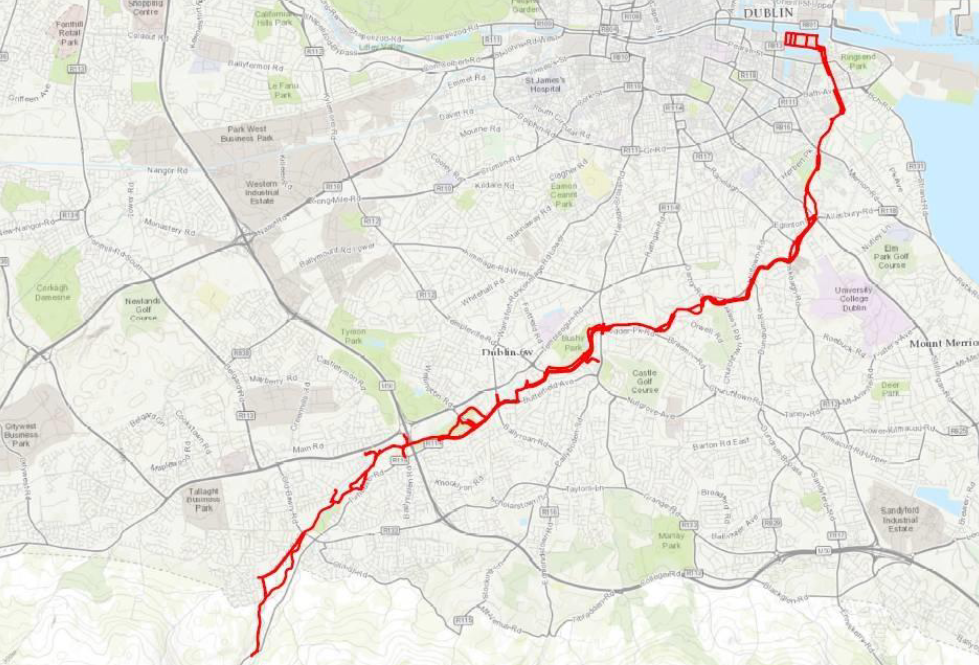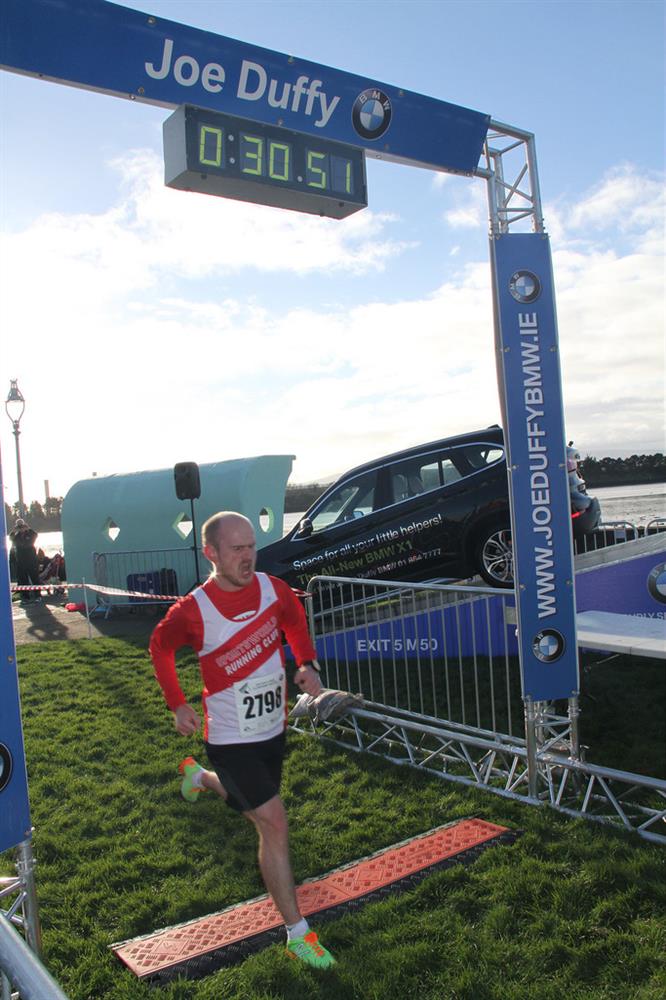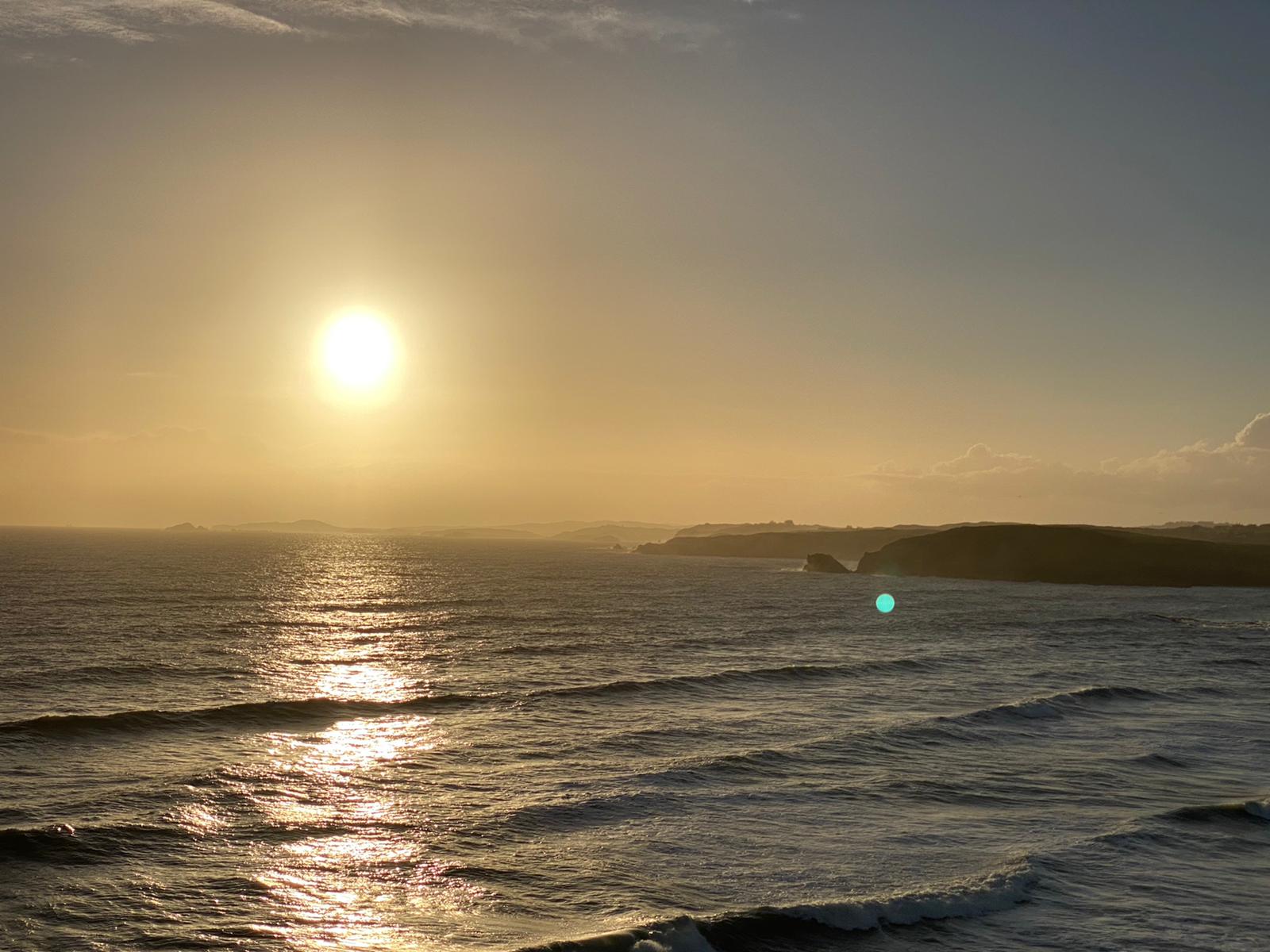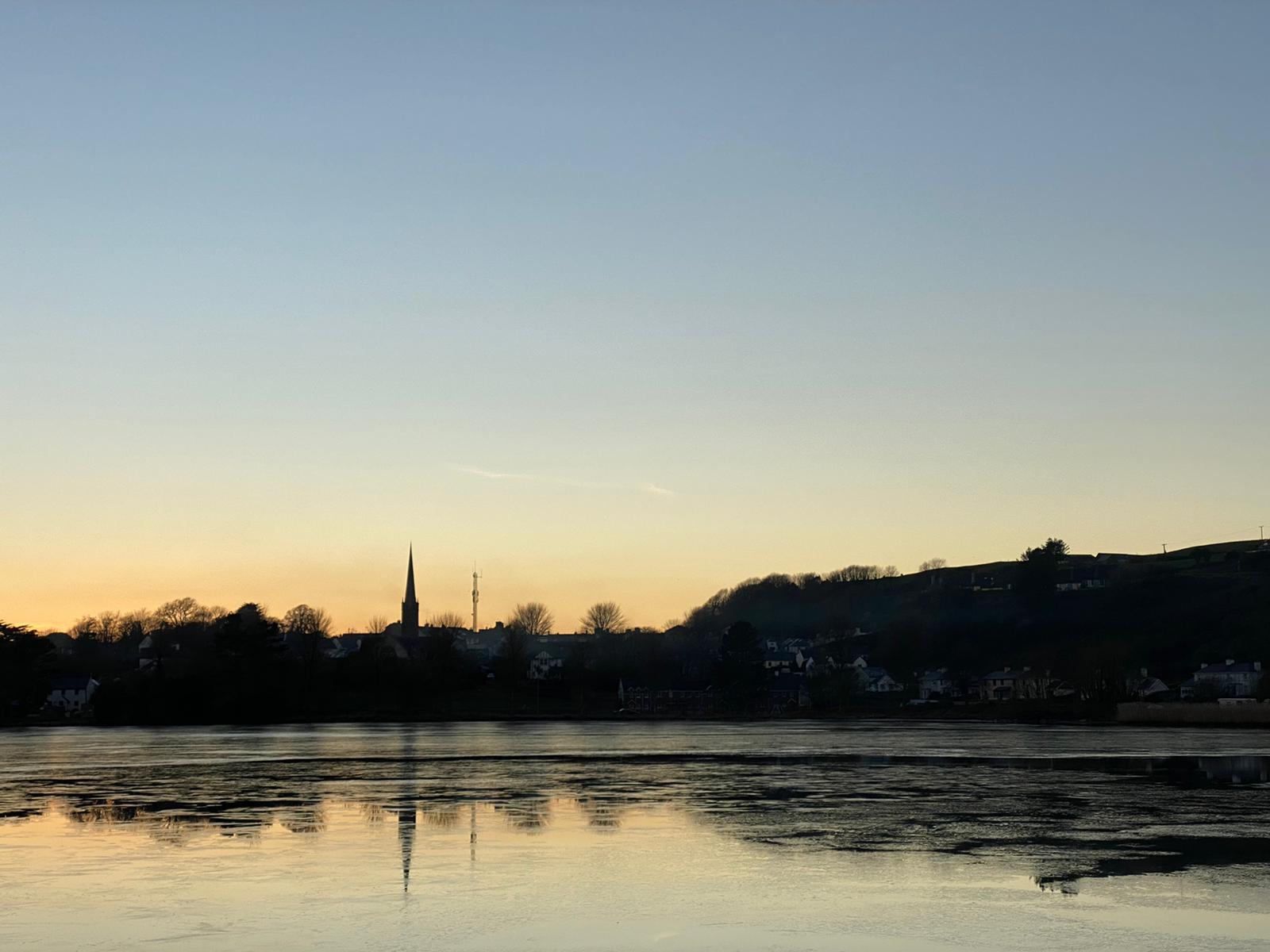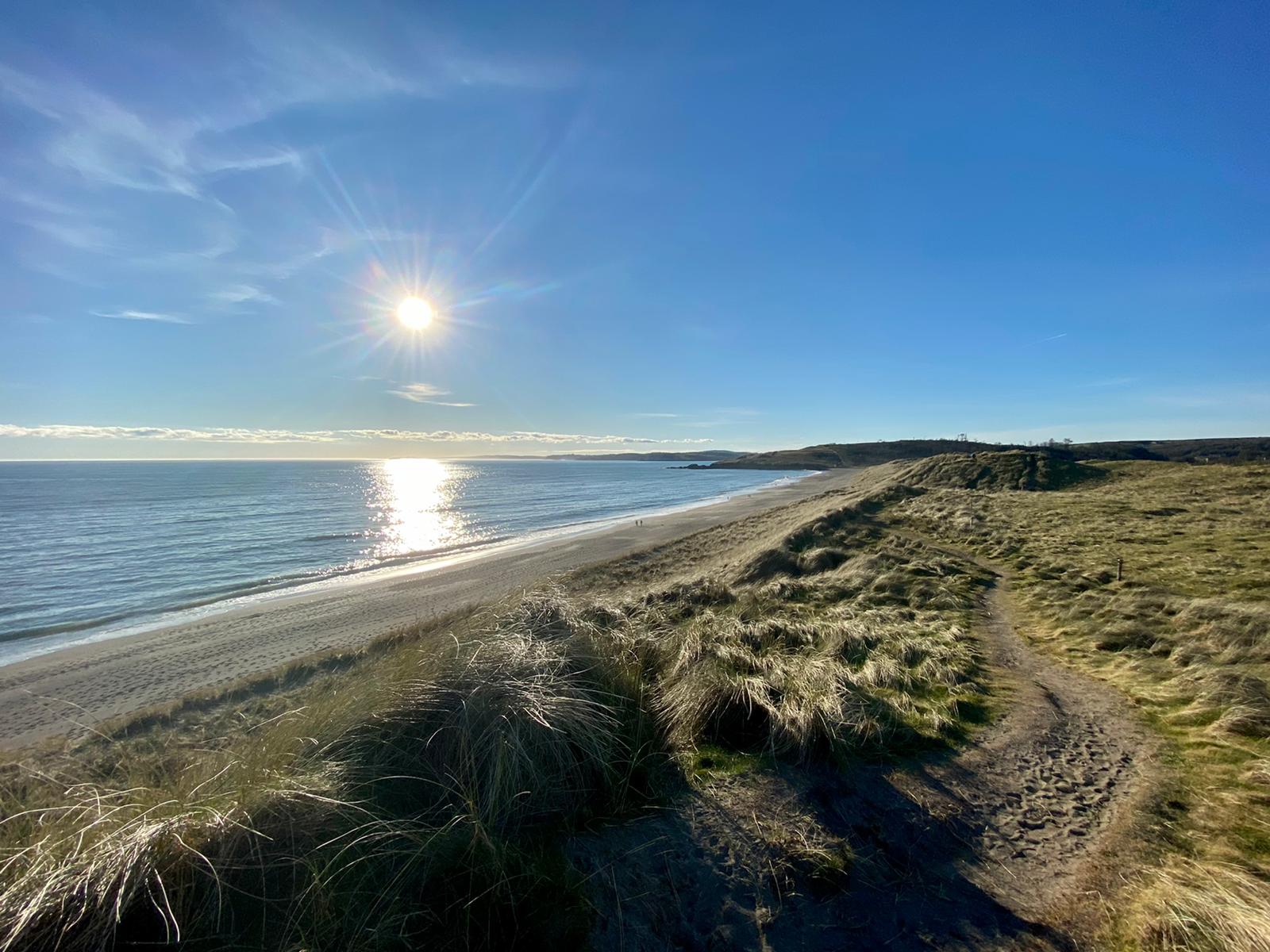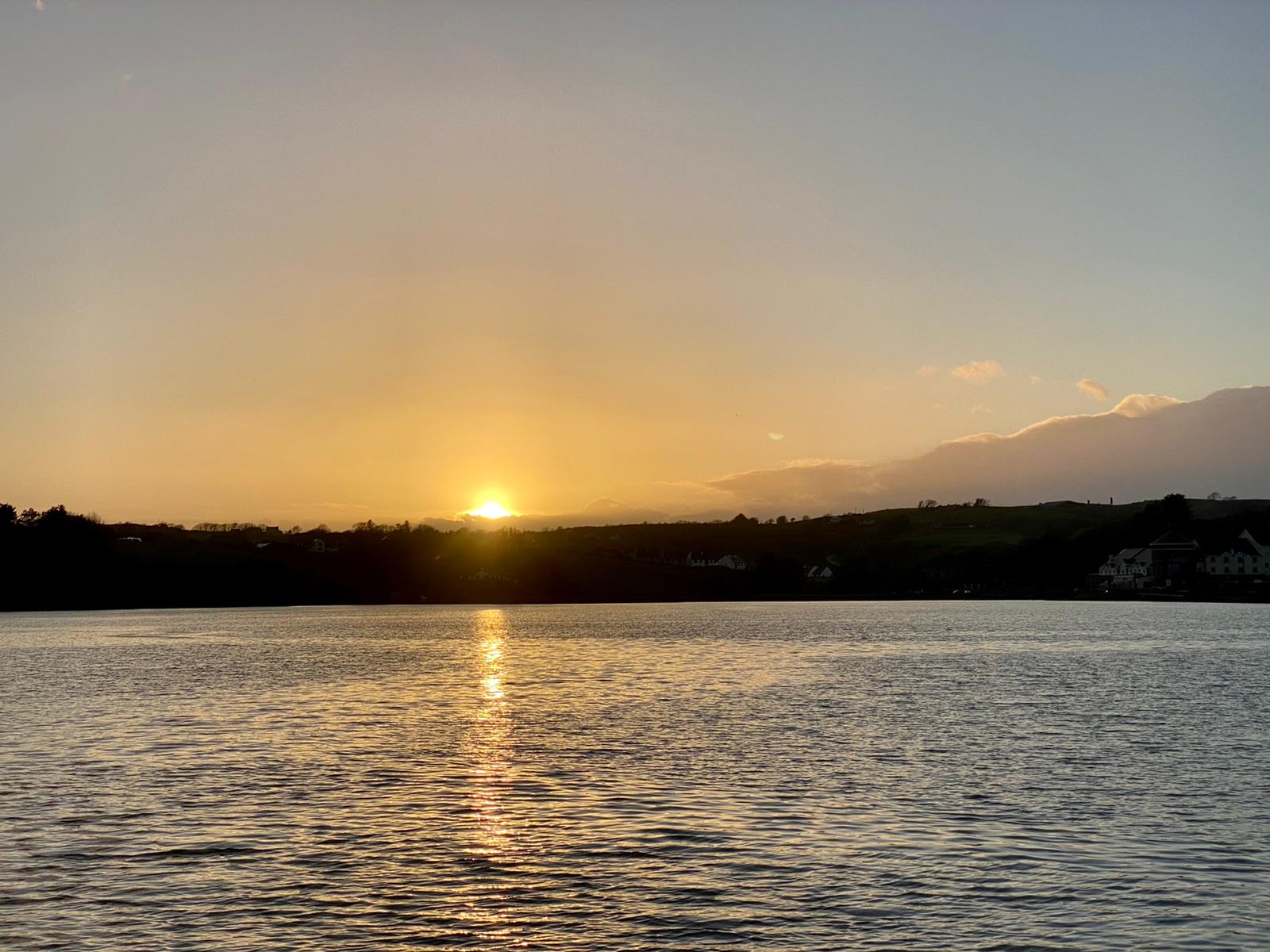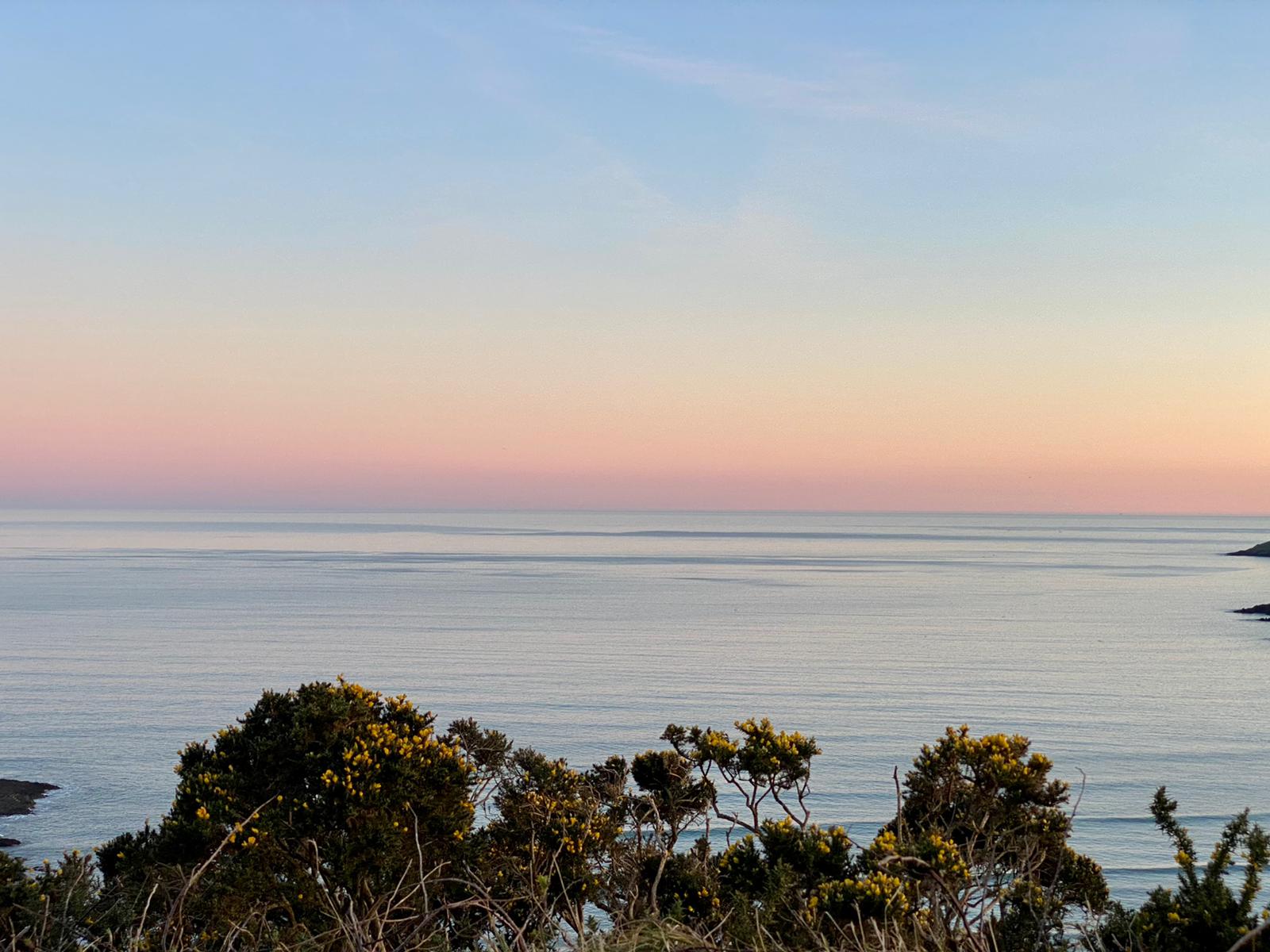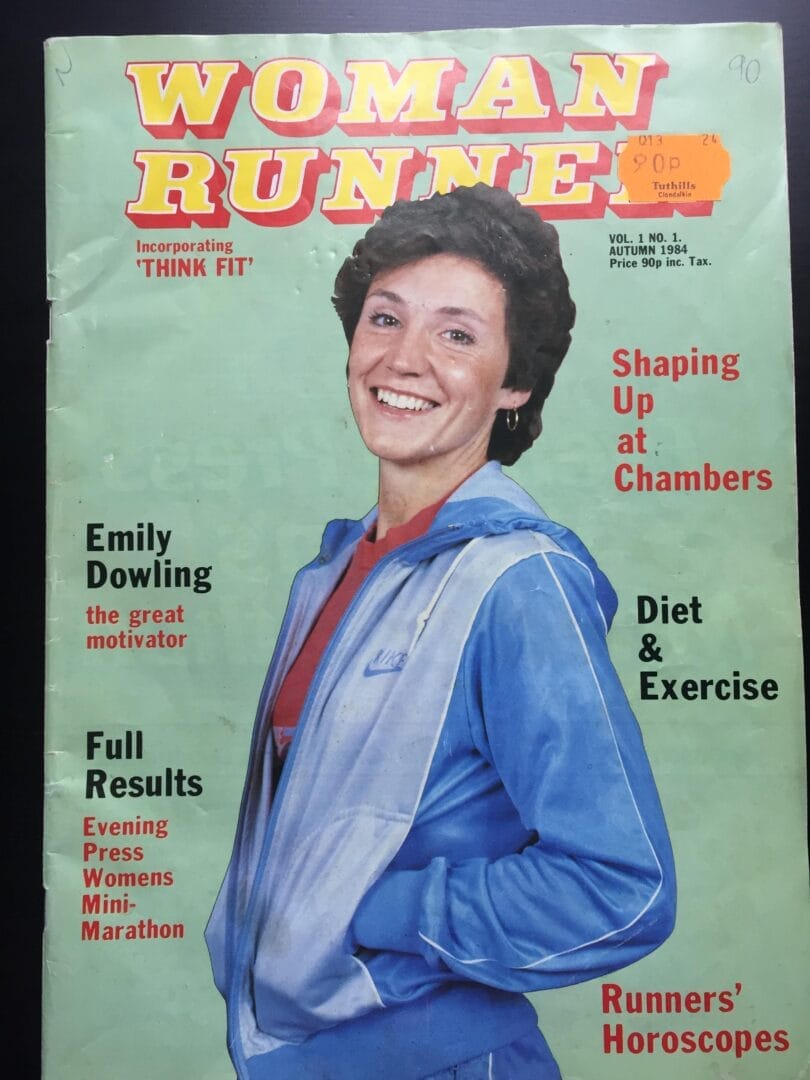On a lovely balmy summer’s evening the red vests of Sportsworld lined out again last night with a few very welcome additions this time – take a bow Lisa, and Sir Paul Hamilton – the best wine till last they say and so he proved in the 5k, as well as some great performances earlier in the evening. A lot happened at this No 3 Meet.
It’s funny how those of us who’ve participated in a number of these meets have now taken to talking about tactics, goals and strategy before we take to the track, whereas only 4 or 5 weeks ago we wondered if we had any business being here at all, or if we might make a show of ourselves or ended up being Paddy last. It just goes to show that a bit of experience of these meets does bring a bit more confidence and enthusiasm to the table no matter how well or not you might do in the end.
The 100m sprints kicked off the evening and as always its impressive to see the speed of the athletes hurtling down the track in a line at full tilt after the gun goes off. The margins at the finish line can be very fine. You watch and you think “if only ….”
The Womens 1500m was next. In the BC1 race newcomer Lisa and seasoned performer Katie took to the start line. Lisa ran a superb race and looked very comfortable throughout – with 600m metres to go she took it on and powered over the last lap and there was no catching her. She won in just under 5mins at 4.59.7 which was fantastic and given that she ran much of the race in Lane 2 (despite us shouting from the sideline “move in Lisa” !) she has plenty more to spare there for next time. Katie ran a steady even pace race and kept the leaders in her sights throughout – she finished in 5:28 which was a big PB and over 10 seconds off her previous time 4 weeks ago.
In the Womens C1 race Edel ran a brilliant race and surprised everyone (we though she was just a sprinter !) – coming up to the bell she looked very comfortable and she really stepped it up then and was getting faster as she went on – it was exciting to watch and she passed out several others and finished very strongly in 5.15. This was a very competitive race with a lot of athletes close together and Deirdre ran a very solid race to finish in 5.41 which was another PB.
In the Mens 1500 CD1 race Timothy and Anthony lined up. Timothy ran very strongly particularly over the first couple of laps and he finished in 4:48. Anthony ran his own race with steady even pace as he always does. He was strong down the home straight and ended up with 5:15. Given that Anthony had put two races back to back in the Leinster Champs in Carlow only last weekend that was a brillant performance. He’s aiming for sub 5:10 on his next outing here.
In the Mens 1500 D1 I took to the startline with no team mates for company this time. I felt I ran ok but was feeling a little bit of Leinster Champs in my legs still and the last lap took more out of me than I thought. I finished up with 5:36 which was similar to what I did in Meet 1 four weeks ago. It was a competitive race and I was happy I ended up 4th.
After the Womens 5000m which was won by in just under 17 mins by Barbara Cleary of Donore the Mens 5000m finished off the night. Paul was in the final heat at 9.15. He’s a newcomer to track races but said he had a target in his head of getting close to the 18’s. The 5000 on the track is a tough grind for anyone and as Anthony said 52 bends is hard to get your head around. Keeping concentration and focus can be a challenge but Paul was more than up to the task. He ran a great race, got into a nice group early on and held his form and pace very well. In the second half he started to pick it up and over the last two laps he was very strong picking off the athletes in his group. He powered down the back straight to finish up with 18.28 which was brilliant – a full half minute off his PB. Well worth us sticking around for.
Overall the Event is very well organised and they seem to have it down to a fine art now with the races bang on schedule, some of them even slightly earlier than scheduled, which can catch a few people out as Myles flagged up before – Looking at you Paul – but on the up side you did’nt have time to get nervous !.
I’d thoroughly recommend these Grade meets to anyone, they’re very enjoyable to both partake it and watch, you get the runners high much quicker post race, and the support from the sidelines is always hugely welcomed and heard when you go around. When I was signing in the chap at the desk said “great to see Sportsworld supporting our Event so well”. Roll on the next Meet.
